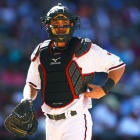Game-calling once got Jim Leyritz exiled from the New York Yankees.
The story, as Jon Pessah tells it in his book "The Game," goes something like this: In the 1996 World Series opener, Leyritz instructed his pitchers to throw fastballs to Atlanta Braves teenage outfielder Andruw Jones -- that despite the Yankees scouts warning their battery to approach Jones with breaking and offspeed pitches. Jones homered twice as part of a blowout victory, with Leyritz confessing afterward he had hoped to trick Jones. Yes, both times.
Predictably, mercurial Yankees owner George Steinbrenner did not appreciate the explanation. "I spend hundreds of thousands of dollars on scouting, and your dumbass players don't follow instructions!" he's reported to have said. Steinbrenner wanted flesh for the folly, and pressured general manager Bob Watson to trade Leyritz that night. Watson did not budge, however, and Leyritz redeemed himself later in the Series with a clutch home run en route to a Yankees title. Watson did relent six weeks after Steinbrenner's initial demand, sending Leyritz to the Los Angeles Angels for a pair of A-ball pitchers, neither of whom ever donned the pinstripes.
It reasons that if poor game-calling is grounds for banishment, as it was with Leyritz in 1996, then good game-calling should merit a distinction approaching sainthood. Baseball's recent history suggests teams do believe in the hidden value of game-calling. Witness Jeff Mathis.
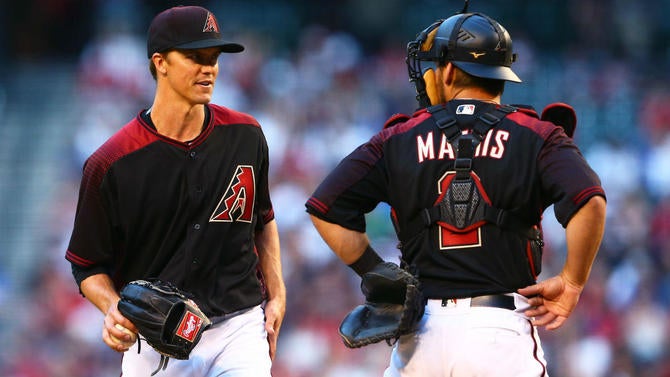
Mathis has been in the majors almost exclusively since the 2008 season. During his career, he's caught for four teams and deposited more than $15 million, owed in part to a pair of two-year contracts, including the one he's playing on with the Arizona Diamondbacks. With some luck, he'll finish with as many seasons played as Hall of Famer Mike Piazza (16) -- with more luck, he'll finish with as many as Johnny Bench (17) or Yogi Berra (19). Pitchers and coaches, those positioned to know best about Mathis's contributions, adore him, to the point where their praise borders on hagiography. And yet his offensive statistics are horrible -- some of the worst in modern baseball -- and suggest he should've been out of a gig a long time ago. A reasonable person, then, must ask: Just what are teams measuring with Mathis that no one else does?
The funny thing about Mathis is that he almost didn't become a catcher. Predominantly a shortstop and pitcher at Marianna High School, located in the Florida panhandle, he slid behind the plate as a senior because his team needed him to -- he was "the only guy on his team who could handle" pitcher and eventual first-round pick Alan Horne, per an old ESPN scouting report. The what-if game with Mathis doesn't end there, or on a baseball diamond. He was a skilled quarterback, one who led his team to the state title game. He had an offer to play at Florida State University and had the chance to star in both sports. Those aspirations ended soon after the Los Angeles Angels drafted him 33rd overall in 2001.
In the 17 years since, Mathis's career has become more puzzling than quantum physics. He is, it seems, the ballplayer who cannot be judged by statistical evaluation.
At the plate, Mathis has recorded a 52 OPS+ in nearly 2,500 plate appearances since debuting in 2005 -- that's the worst mark among hitters with more than 2,000 trips to the plate during that same time frame. The next-worst hitter has been Cesar Izturis, a slick-fielding shortstop who checked out in 2013 at 60. Jose Molina, a mentor to Mathis early in his career, is the next-worst catcher -- his 64 OPS+ looks healthy by comparison. Whereas Molina enjoyed a late-career popularity surge due to the public quantification of catcher framing by Dan Turkenkopf and Mike Fast (both now employed by MLB teams), Mathis is still waiting for the day when an intrepid researcher elevates him into a cause célèbre by capturing his raison d'être on a spreadsheet.
All the tangled variables involved in quantifying game-calling provide a nearly insurmountable obstacle for analysts hoping to capture its value in an objective form. Because of that, Mathis's defense will continue to look more good than great when measured by numbers. His career 28 percent caught-stealing rate is one percentage point higher than the league-average, and his 1.96 pop time -- scouts' go-to measure for judging catchers' ability to shut down the basepaths -- was two-hundredths quicker than average in 2017, per Baseball Info Solutions. Baseball Prospectus, bless their hearts, offers the most complete view of a catcher's defensive by considering their framing, blocking, and throwing. Mathis's mitt, per BP, has been worth about five runs per full season. Solid, no doubt; the second coming, not quite.
Add it all together and Mathis has tallied 3.9 Wins Above Replacement in his career, according to BP. His numbers at other sites are worse: 1.2 wins at Baseball Reference, and -0.8 at FanGraphs. Forget defying statistical evaluation -- Mathis is the player who has evaded the statistical evolution. Teams are said to be as smart as ever, staffed by Ivy Leaguers who are equipped with endless amounts of data. (The Diamondbacks are no exception: They employ well-regarded quants Mike Fitzgerald and Jack Goin.) Mathis would seem to flunk every red-number test thrown his way. How then is he still on a big-league roster?
"I think a lot of the reason I'm still able to be in this game is because of the pride I took on the defensive side, handling those pitchers, and getting to know all those pitchers," Mathis told CBS Sports.
Others agree.
"Mathis had an uncanny ability to be able to have a good, strong, solid relationship with our entire pitching staff," said ex-Angels general manager and farm director Tony Reagins. "Obviously his offense wasn't major-league average, but his ability to call a game and his ability to have that relationship with the entire pitching staff made our team better."
There is statistical support for Mathis's genius, but it's buried deep in numbers prone to noise and variance. He's earned 100-plus plate appearances in 11 big-league seasons. In 10 of those tries, his team's pitchers have posted better strikeout-to-walk ratios with him behind the plate than with the primary alternative; in nine of those years, his team's pitchers have posted better ERA and OPS against than with the primary alternative. Those numbers stretch over four teams and countless pitchers, pitching coaches, ballparks, opponents. That can't be a fluke -- can it?
Mathis's game-calling abilities at times take on the air of a religious experience. To see it first hand is the only way to morph "believe" into "know." Perhaps that's why the Diamondbacks signed him to a two-year deal worth $4 million last winter. Their then-new coaching staff included manager Torey Lovullo and pitching coach Mike Butcher. Both had previously worked with Mathis, either during his time with the Toronto Blue Jays or the Angels. Perhaps, too, that's why the Diamondbacks then entrusted Mathis to become the personal catcher for Zack Greinke, the club's $206-million ace who has drawn comparisons to Greg Maddux for his command, his intelligence, and his demanding ways. Mathis started 56 games in his first year with the D-Backs -- 25 of those came with Greinke on the bump. That's faith.
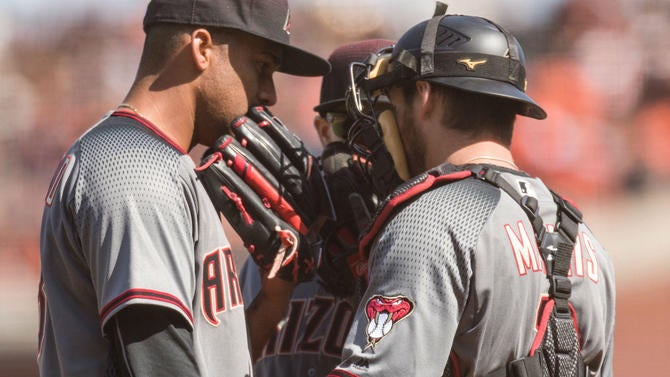
Few pitchers get to work with a backstop as skilled as Mathis. Those who do get to work with a top-flight backstop remember it.
Toby David, a former minor-league pitcher, still vents about the bad catchers he had to deal with, too. "We had a catcher in the low minors who, anytime a runner got on first, would always call fastballs away," he said. "He sometimes wouldn't even let you shake off. He wanted to make sure he had a good shot at throwing out the baserunner, regardless of whether you were tossing meatballs up there." As for the good catchers? David talks fondly about Dane Sardinha and another one -- the one he got dressed down alongside by the coaches after a clean inning.
The reason for the coaches' ire seems laughable now. David's catcher had "spotted up," or set up on the edges of the plate, allowing for the soft-tossing lefty to nibble on the edges. At the time, the Miami Marlins forbade their minor-league catchers at levels lower than Double-A from setting up anywhere but the middle of the plate on counts that weren't 0-2 or 1-2. The Marlins wanted their young pitchers to learn to pitch to contact and to trust their stuff. Neither David nor the catcher stayed in the system for long. That catcher, named Greg Lovelady, has since resurfaced in an important baseball role: Head coach at the University of Central Florida.
The people interviewed for this piece -- coaches, scouts, former pitchers and catchers, analysts -- almost all answered the same way when asked what made a backstop good at the intellectual side of catching. According to them, a good game-caller is a catcher who has the trust of his pitchers; who understands what the pitcher on the mound is good at and how they tick; who has the trust of his pitchers; who can game-plan and later make in-game or in-at-bat adjustments; and who has the trust of his pitchers. Trust came up a lot -- trust, like that engendered by breaking the rules to help the pitcher along, inadvertently or otherwise.
"Toby and I had a great inning, we did our jobs, but at the end of the day that wasn't what the goal was, and that wasn't what they wanted," Lovelady said. "I don't know if he was aware of that, because he had been there, but I was not aware of that, I had just shown up [from playing in the College World Series with the University of Miami]."
Lovelady is now a rising star in the coaching ranks, having succeeded at Wright State before taking over UCF prior to last season. The Knights won their conference in his first year, owed in part to the nation's fifth-best ERA -- their run prevention improved by 1.2 runs compared to the previous team. Lovelady deserves at least part of the credit for that. He's the one who runs the roster, he's the one who used his pro experience to alter how his catchers approach the game, and he's the one who calls the pitches -- the same way most amateur coaches do.
Game-calling as a collegiate or high-school catcher often means little more than looking to the dugout for the signal, flashing the appropriate number of fingers, then doing it again. Catchers don't get a chance to learn their opponents over three- and four-game series, so they rely on their coaches' expertise. "We do a lot more studying than they do, just because that's what our job is," Lovelady said.
But whether or not college catchers should be allowed to call their own games is a lively debate, and one that has reasonable people on both sides. A catcher has a better view--of pitcher and batter -- than anybody in the dugout. "Having a catcher who understands it, there's really no substitute for it," said Drew Dickinson, the pitching coach at the University of Illinois, where batteries have been required to call their own games since head coach Dan Hartleb took over in 2006. In the last five drafts, the Illini have produced four pitchers or catchers selected in the top-10 rounds, including the two-first round picks (Cody Sedlock and Tyler Jay).
Dickinson understands the importance of learning to call a game independent of the bench. He reached Double-A after being selected by the Oakland Athletics in the "Moneyball" draft, and believes players learn quicker when they're given the reins. He also believes the downsides are overstated. "The last thing a coach wants to do at a certain level is say 'hey guys, you go ahead and take it' and that's putting their trust into an 18-, a 19-, a 20-year-old kid for their livelihood," he said. "My side of this is, well, teach those kids, you know?"
Just how do teams teach those kids how to call games? Mathis's development provides a hint.
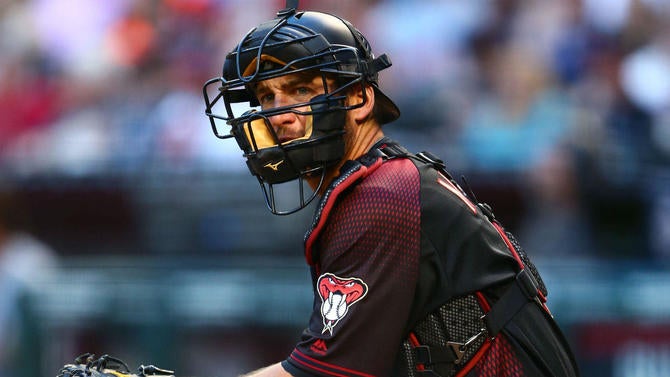
"I've known Jeff since he was 18 years old, really," Butcher said. "His pitcher-catcher relationship, so far as how he deals with pitchers, helps him out. He's able to anticipate extremely well because he knows our guys that well. He's done his homework. He puts himself in position -- obviously he knows what's coming when he's calling pitches -- but to understand what the pitcher is trying to do in those situations so he can anticipate balls in the dirt or elevated fastballs."
Butcher was indeed around when Mathis first became a professional. Butcher was also around later on, when Mathis became a punchline. Put simply, Angels manager Mike Scioscia -- himself a big-league catcher of more than 10 years -- preferred Mathis's defense to Mike Napoli's offense. Sabermetricians and others of the quant cloth questioned, scoffed, and belittled Scioscia and Mathis for the decision (which has been legislated and retried many, many times).
But there's one aspect worth addressing. Scioscia wasn't merely John the Baptist or an apostle when it came to Mathis's defense -- he was the unmoved mover; the source of all that was, is, and ever will be; the reason Mathis approached defense piously. "He really made a point to us that the catcher-pitcher relationship was front and foremost in our job description," Mathis said of Scioscia. "He just wanted it to be known and that to be our focus, not to be offensive, not to be baserunning, this, that, or the other. The defensive side, and really the game-calling and pitcher-catcher relationship was something that had to be front and foremost for his catchers."
There are countless stories in baseball's past of a mentor urging their apprentice to embrace this or that -- many of them hooked to the foul side of time because the players don't have the talent or opportunity or luck needed to have their stories told and their inspirations made clear. For instance, Phil Garner isn't heralded as the muse to St. Louis Cardinals manager Mike Matheny by anyone, even though Matheny was so moved by Garner as to include this episode in his book: after Matheny jogged off the field following his first big-league half-inning, Skip asked Rook why he had called a certain pitch to a certain batter. Matheny didn't have an answer. That, he says, taught him a lesson and sent him down a more intellectual road.
If the lesson Mathis learned from Scioscia can be summed up in a similarly neat anecdote, one that casts Scioscia as a catcher-obsessed Mr. Miyagi, it might involve memory and intention as well. "When Jeff was with the Angels farm system, under Scioscia, our catchers were required to learn every pitch of every game -- to be able to recall," Butcher said. Books like "Moonwalking with Einstein" have shown that just about anyone can use tricks, like the mind palace technique, to retain and access large bundles of information. Memory isn't innate, the book theorizes; it can be worked at and developed with smart practice. Likewise, "a great memory isn't just a by-product of expertise," author Joshua Foer wrote, "it is the essence of expertise."
In Mathis' case, homing his memory -- his total pitch recall -- served as more than the essence of his game-calling expertise -- it served as an example of how to develop the other parts of his craft: with careful, constant work. "It's hard work, it's time, it's repetition, and it's knowledge of the game. I think all of those things are extremely important," Reagins said about the art of game-calling. "It's taking ownership of your craft. I don't think it's just something you're born with, I think it's something you're taught, and it's something you repeated many, many times."
But to better appreciate Mathis, it's important to appreciate the finer aspects of game-calling.
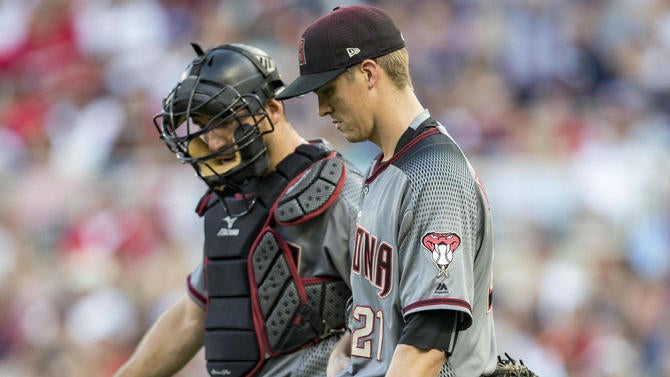
The desire to maintain a competitive advantage precludes Mathis from divulging his secrets, or giving an example of how he would advise his pitcher to challenge any given batter. His pitchers have occasionally spilled the beans on his behalf -- each making certain to praise the backstop.
Dan Haren, who the Diamondbacks now employ as a "pitching strategist," once tweeted this:
@LyleMSpencer best catcher I threw to in my 13 years in the big leagues.
— dan haren (@ithrow88) March 22, 2016
Mathis has been credited with changing Greinke's pitch selection to include more breaking balls -- the same tweak he made when he called games for the late Jose Fernandez in Miami. "I shake him one time. The last guy I faced, because I wanted to throw one changeup at least. But once in a game? It's incredible,"Fernandez said in 2013. "Tempo-wise, he's calling, you throw it, like I said, I shake him one time. I tell him, 'Hey, this time I didn't look at the videos. I didn't do anything. I trust you. I know you're going to do your stuff. I'm 100 percent I'm going to do what you want. He knows me really well. He knows when I like to throw the pitches."
From the outside, game-calling is seen as more than knowing when the pitcher likes to throw his fastball or his changeup -- it's seen as an intersection of art and science. What is the best way to get a batter out? Is it focusing on the batter's weaknesses? Is it occasionally, like Leyritz in '96, paying interest to game theory by giving in to the hitter's strength to fool him? Is it, as the most ardent iconoclasts argue, simply using a random number generator to call pitches?
Those interviewed for this piece offered a different approach, expressed best by Jerry Weinstein. "Pitch-call to the strengths of your pitcher," the Colorado Rockies catching instructor and baseball lifer said. "I've always said that the so-called 'wrong' pitch thrown with confidence is better than the 'right' pitch thrown with doubt. This game is based on confidence. So, if the pitcher feels confident in his ability to execute a particular pitch, that's far more important than the so-called 'right' pitch."
It's probably no coincidence that this answer is repeated nearly as often as the one about trust. "Probably," because trust within a battery is borne from reassuring the pitcher time and again, in upward of 100 times in a day or night, that he is valued and understood, and that the catcher is there for him -- really -- and they'll get through this little three-hour journey together. Traces of this reality are abound with the topic. To wit, when David gave advice for catchers, his points were simple: 1) be an ally, not a cheerleader; 2) work to understand a pitcher's mindset -- and yes, it's different from the catcher's mentality as a hitter; and 3) don't be lazy -- a catcher who blocks every ball in the dirt offers more peace of mind than a warm blanket on a chilly evening.
The modern catcher has more tools at their disposal than Mathis did when he broke in. Teams are using more and more information, and handing the video and the stat printouts to their batteries with the hope they can learn how to take away the important parts and implement them into their gameplans. Communication, always paramount, is more important now than ever. That's why, Mathis says, the toughest part of catching Greinke is staying on the same page. ("Just making sure that I'm in the right spot, making sure I'm putting down the fingers we talked about and went over in our gameplanning.") That means using that trusty memory to dial up how they intended to approach certain batters, or how they desired to end sequences.
The added information undoubtedly helps inform those decisions, and in theory can make a catchers' life easier -- what better way to boost a pitcher's confidence than pointing to numbers and other tangible evidence that a certain approach works? "The technology gives you a foundation. It doesn't build the [home] for you, but it gives you a foundation, and it gives you kind of a default position. Then you're hoping you're able to adjust faster than they're able to adjust," Weinstein said. "But overwhelmingly, it's like gambling. You're the house, and the house always wins. The pitcher and the catcher are the house, because of the rule of 68 -- 68 percent of all fairly hit balls in the big leagues are outs. So, overwhelmingly, the odds are in your favor."
Other developments are probable, too.
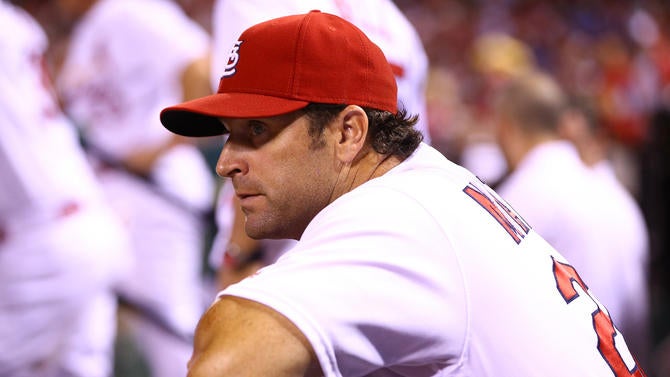
It's possible teams feel they have a grasp on how to translate game-calling into runs and wins. They have a leg up on the public, after all, since they know what the public does not: who dictates the pitcher-catcher relationship. The Diamondbacks, for whatever it's worth, are paying Mathis for about a fifth of a win per season, based on the accepted $10-million-per-WAR ratio. BP listed Mathis as being worth 0.6 wins in 2017 -- that's without any value added for his work with the pitching staff. Just a couple more runs would push Mathis -- the feller who, at first glance is easy to paint as overpaid filler -- closer to big bargain territory.
It's also possible teams are already using the tools that will develop the new Mathis. Clubs like the Tampa Bay Rays have been using virtual reality to assist their hitters for more than two seasons now. It's possible that the same technology could help foster catchers. "Let's say part of game-calling is being able to judge if a pitcher is tiring, and then adjusting a plan to reflect a lack of stuff or movement as the game goes on," said Bryan Grosnick, a managing consultant in the field of instructional design and training development, as well as a writer at Baseball Prospectus. "One way you could use virtual reality is to take video of a starting pitcher over the course of 100 pitches, and allow the catcher to use the virtual reality rig to note the signs in his body, velocity, and movement that indicate where the pitcher is tiring and what the changes are between his offerings as a result.
"Virtual reality wouldn't be a replacement for the work of practicing getting behind the dish and working with the staff, but it would rather be a way that catchers could get extra looks at pitches (and pitchers) in a real-world situation, without wearing a pitcher down ... or even wearing themselves down by popping into a crouch and catching an extra-long bullpen session."
No matter the developmental methods, it'll still require a special individual to become a Mathis-like figure -- one who has oodles of drive, passion, and curiosity, as well as the ability to capture the trust and belief of his teammates, coaches, and front offices. The deck is stacked against any one player filling that role, but there are some candidates worth mentioning. Expect to hear more about 18-year-old Will Banfield in the lead-up to June's draft. He's the rare prep catcher who calls his own games. "Scouts rave about his feel for catching," Rotoworld's Christopher Crawford said. Banfield should go in the top 50.
Acclaimed game-callers already in the professional machine, according to Crawford, include Sean Murphy and Jason Goldstein, both in the A's system. Is it a coincidence that Murphy played under Lovelady at Wright State? Is it a coincidence that Goldstein played at Illinois under Dickinson and Hartleb? Is it a coincidence that the A's -- the team best known for being ahead of the curve, for valuing inefficiencies above all, and for digging where others dare not -- employ them both? Maybe. Just know it wouldn't be the first time the A's have been accused of dabbling in alchemy previously reserved for philistines and heretics.
As for the current model, Mathis is nearing the end of his playing days. He'll spend the year catching Greinke and backing up Alex Avila before entering next winter as a 35-year-old free-agent. He might play another season, he might play another five. The answer is as unknowable as game-calling's statistical impact on pitchers. It all depends on if an executive is convinced Mathis's effect is both, as real as the invisible wifi signal beaming to their phone or laptop, and nearly imperceptible on his stats page.
When Mathis does stop playing, his name will almost certainly be bandied about for managerial gigs -- the same way it was for Matheny. For the record, he has acknowledged his interest in a post-playing career, should he get the call. It seems likely -- baseball believes in Jeff Mathis, even when no one else does.









